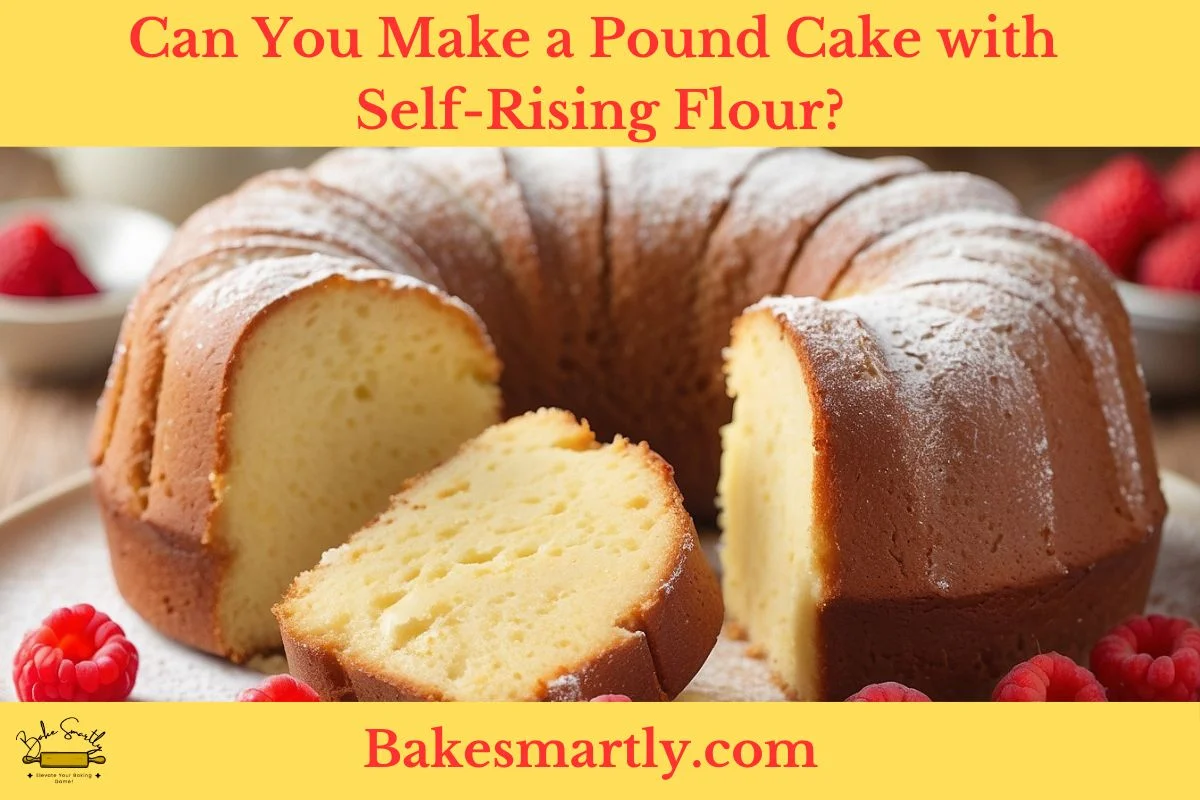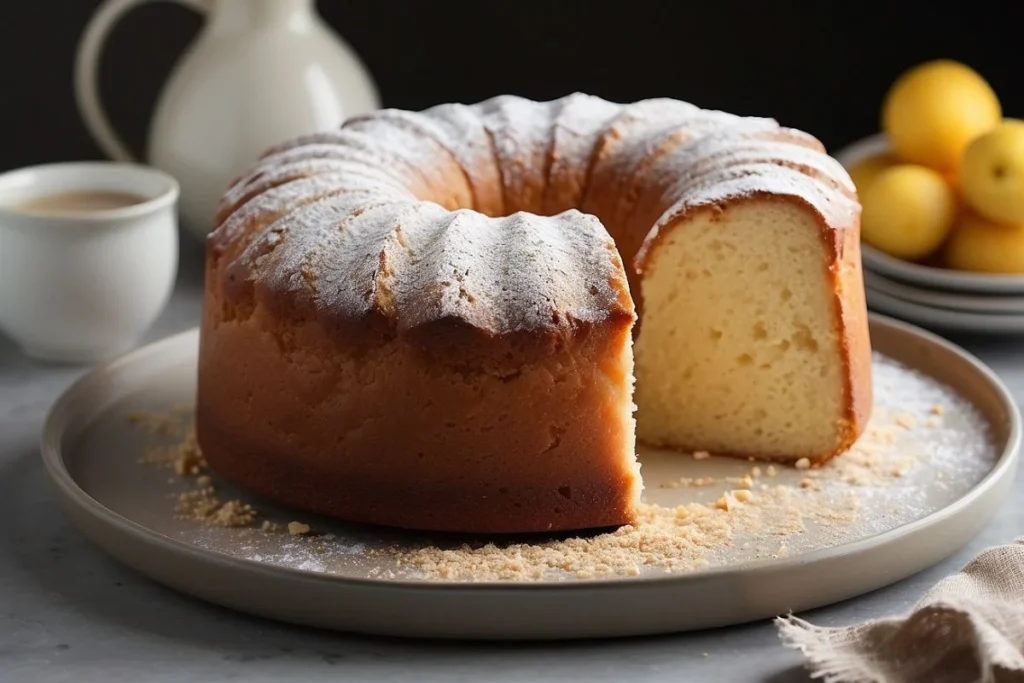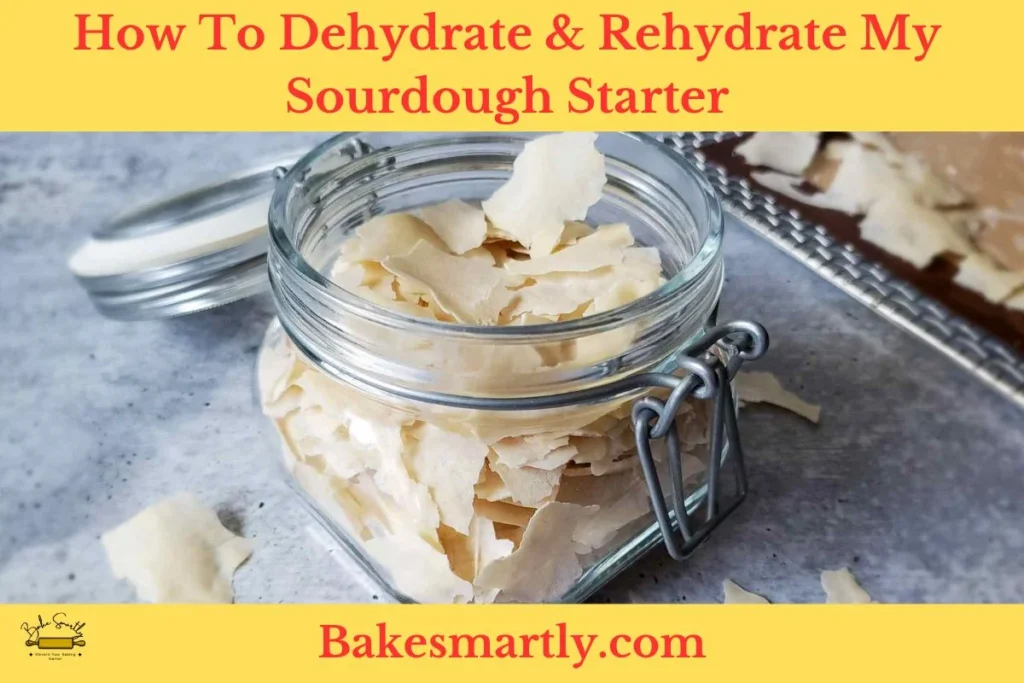
Can You Make a Pound Cake with Self-Rising Flour?
Pound cake, a beloved classic in the world of baking, has undergone various transformations over the years. Traditionally crafted with all-purpose flour, there’s a growing curiosity about using self-rising flour as an alternative.
In this article, we’ll explore the possibilities, advantages, and potential pitfalls of making a pound cake with self-rising flour.
Table of Contents
ToggleAdvantages of Using Self-Rising Flour in Pound Cake Recipes
Baking fans know the classic pound cake recipe inside out, but a simple change in ingredients can spice things up. Using self-rising flour in pound cake recipes brings some perks that make baking easier and tastier.
Saving Time
The biggest plus of using self-rising flour in pound cakes is the time it saves. Since the flour already has baking powder and salt mixed in, you skip the step of measuring and adding these separately.
Whether you’re a busy baker or just want a quicker baking process, self-rising flour is a game-changer. It streamlines the prep, making baking faster and more efficient without sacrificing the final product’s quality.
Consistent Rising
Getting the perfect rise in a pound cake can be tricky. Self-rising flour, with its exact mix of leavening agents, guarantees a consistent and dependable lift in the cake.
This is especially helpful for new bakers still getting the hang of evenly incorporating leavening agents. The result is a pound cake with a consistently airy texture, adding a light touch to the typically dense nature of pound cakes.
Flavor Flexibility
Self-rising flour opens up a world of flavor possibilities. Beyond the basics, bakers can play around with different tastes, from citrusy zests to aromatic extracts.
The leavening agents in self-rising flour work well with these added elements, creating a more intricate and rich flavor profile. This flexibility lets bakers get creative, customizing their pound cakes to match individual tastes and preferences.
No-Fail Rise for Beginners
New bakers often struggle with getting their cakes to rise just right. Self-rising flour is a foolproof solution, lowering the chances of common mistakes related to leavening.
The well-balanced mix of ingredients ensures a reliable rise, giving beginners a boost in confidence and success in their baking adventures.
Common Mistakes to Avoid When Baking Pound Cake with Self-Rising Flour
Getting into making a pound cake with self-rising flour can make things easier, but you’ve gotta watch out for some common slip-ups to make sure your cake turns out delicious. Here are five mistakes to avoid when using self-rising flour in your pound cake recipe.
- Stirring Too Much: Don’t go overboard with mixing the batter. It’s a big no-no in pound cake baking. Since self-rising flour already has the leavening stuff mixed in, stirring too much can make your cake too heavy or mess with the texture.
- Forgetting to Tweak the Flavor: Self-rising flour takes care of the rising part, but don’t forget about the taste. Regular pound cakes have a specific flavor, so if you don’t adjust the sweetness or saltiness, your cake might not hit the right notes.
- Ignoring Other Ingredient Changes: Self-rising flour helps with rising, but you still need to think about the other ingredients. Messing with the amounts of butter, sugar, and eggs is important to keep your pound cake balanced and just right.
- Not Keeping an Eye on Baking Time: Baking times can be all over the place, especially with self-rising flour. Keep an eye on your cake in the final stages to make sure it doesn’t end up overcooked or undercooked. You want the texture and taste to be just right.
- Being Sloppy with Measurements: Even if you’re using self-rising flour, being precise with measurements is still super important. Straying from the recommended amounts can mess up the delicate balance of ingredients and mess with the overall quality of your pound cake.

How to Make Pound Cake with Self-Rising Flour | Step-by-Step
Creating a delicious pound cake with self-rising flour involves a simple yet thoughtful approach. This step-by-step guide will walk you through the process, from assembling the ingredients to pulling a perfectly baked pound cake from your oven.
Ingredients You’ll Need:
Gathering the right ingredients is the first crucial step in making a pound cake with self-rising flour. Here’s what you’ll need:
- Self-Rising Flour (2 cups): The star of the show, self-rising flour is the cornerstone, simplifying the baking process by incorporating leavening agents.
- Butter (1 cup – unsalted): Opt for unsalted butter to have control over the salt content in your recipe, ensuring a balanced flavor.
- Sugar (2 cups – granulated): Granulated sugar serves as the sweet foundation essential to achieving the classic taste of a pound cake.
- Eggs (4 – large): Large eggs contribute not only to the richness but also to the structural integrity of the cake, ensuring a moist and decadent result.
- Milk (1/2 cup): Adding milk to the batter is crucial to achieving the desired consistency, ensuring a perfect blend of flavors and textures.
- Vanilla Extract (1 teaspoon): For a delightful aroma and flavor, a mere touch of vanilla extract goes a long way in enhancing the overall sensory experience of your pound cake.
Instructions
- Step 1: Get the Oven Going Before you start mixing things up, heat your oven to the recommended temperature. This makes sure your pound cake bakes up just right.
- Step 2: Prep Your Pan Whether you’re using a regular loaf pan or trying out a fancy bundt pan, grease it up and dust it with flour so your cake doesn’t stick.
- Step 3: Mix Butter and Sugar Until Fluffy In a big mixing bowl, mix together softened butter and sugar until it gets light and fluffy. This part is important for making the cake nice and airy.
- Step 4: Add Eggs One by One Make sure you mix in the eggs one at a time, giving a good beat after each. Doing it slowly like this keeps the batter from getting too heavy.
- Step 5: Add Self-Rising Flour Gradually Add the self-rising flour bit by bit to the wet stuff, switching off with the milk. This helps keep your batter smooth and without lumps.
- Step 6: Toss in Some Vanilla Throw in a teaspoon of vanilla extract to make your pound cake taste even better.
- Step 7: Mix Until Just Mixed Don’t go crazy mixing! Just mix until everything is together—going too hard can make your cake tough.
- Step 8: Pour Into Your Pan Put the batter into your prepared pan, spreading it out so it bakes up nice and even.
- Step 9: Smooth Things Out Use a spatula to make the top of the batter nice and smooth, so your cake looks great when it’s done.
- Step 10: Bake Until It’s Just Right Stick the pan in the preheated oven and bake for the suggested time. Keep an eye on it in the last few minutes to make sure it doesn’t bake too much.
- Step 11: Check with a Toothpick To be sure your cake is done, stick a toothpick in the middle. If it comes out clean or with just a few crumbs, your pound cake is good to go.
- Step 12: Let It Cool and Dig In Let the cake chill in the pan for about 10 minutes before moving it to a wire rack to cool all the way. Once it’s cooled, cut it up and enjoy your awesome self-rising flour pound cake!

Tips for Achieving the Perfect Texture and Crumb with Self-rising Flour
Perfecting the art of baking with self-rising flour goes beyond just following a recipe. If you want your pound cake to turn out with the perfect texture and crumb, keep these five important tips in mind:
Gentle Mixing is the Key
Traditional pound cakes need thorough mixing for structure, but with self-rising flour, you want to be gentle. Stir the ingredients until they’re combined to avoid overactivating the leavening agents. This will give you a light and airy crumb.
Watch the Moisture Balance
Self-rising flour can affect the moisture in your pound cake. Pay attention to the wet ingredients and adjust the quantity of liquids like milk or eggs. You want your batter to stay moist without getting too dense.
Experiment with Extra Leavening
Even though self-rising flour has leavening agents, try adding a bit of baking soda or baking powder for an extra lift and a fluffier texture. This works well if you want a slightly higher crumb.
Get the Oven Temperature Right
The key to the perfect texture is precise baking temperatures. Make sure to preheat your oven properly and keep a consistent temperature throughout. Temperature fluctuations can affect the rise and overall structure of your self-rising flour pound cake.
Be Patient When Cooling
Give your pound cake enough time to cool before slicing. The residual heat continues to work on the texture, and cutting into a warm cake can make it crumbly or gummy. Being patient during the cooling process ensures a well-set, moist, and delicious pound cake.

Troubleshooting Common Issues When Baking with Self-Rising Flour
Baking with self-rising flour is a handy shortcut, but like any cooking adventure, it has its challenges. Knowing how to deal with common issues can be the difference between a perfect pound cake and a kitchen letdown.
Here are some mostly common issues to tackle potential hiccups when using self-rising flour in your baking
Uneven Rising
Issue: Uneven rising can lead to a lopsided or misshapen cake, affecting both aesthetics and texture.
Troubleshooting: Ensure the batter is evenly distributed in the baking pan. Uneven rising may result from an inconsistent spread of batter, causing certain areas to rise more than others. Additionally, check the oven temperature for accuracy, as variations can impact the cake’s overall rise.
Slightly Undercooked Center
Issue: A slightly undercooked center is a common concern, especially when experimenting with new recipes.
Troubleshooting: Adjust the baking time and temperature based on your oven’s characteristics. Cover the cake with aluminum foil during the final stages of baking to prevent excessive browning while allowing the center to cook thoroughly. A toothpick inserted into the center should come out with a few moist crumbs but no raw batter.
Cracking or Collapsing
Issue: Cracking or collapsing can occur due to rapid temperature changes or overmixing.
Troubleshooting: Gradually cool the cake in the turned-off oven with the door slightly ajar to prevent sudden temperature shifts. Avoid overmixing the batter, as this can incorporate excess air, leading to structural issues. If the cake does crack, consider embracing it – sometimes imperfections add character.
Excessive Browning
Issue: Excessive browning on the top of the cake can result in a less appealing appearance.
Troubleshooting: Cover the cake with foil during the latter part of the baking process to shield it from direct heat. Ensure the oven rack is positioned correctly, avoiding proximity to the heating element. If using a dark-colored pan, reduce the oven temperature slightly, as these pans absorb more heat.
Does Self-Raising Flour Need Yeast?
No, you don’t need yeast for self-rising flour. Unlike regular bread recipes that use yeast to make the dough rise, self-rising flour already has baking powder and salt in it, so you’re good to go without adding extra yeast.
The baking powder and salt in self-rising flour do their thing when they meet moisture and heat in the oven, making your dough or batter puff up. That’s why self-rising flour is handy for quick breads, cakes, and recipes where you want things to rise without dealing with the whole yeast-proofing process.
Frequently Asked Questions (FAQS)
Can I use self-rising flour instead of all-purpose and yeast?
Yes, you can substitute self-rising flour for all-purpose flour and yeast in certain recipes. However, adjustments to other ingredients may be needed as self-rising flour already contains leavening agents, altering the baking dynamics.
Is self-rising flour good for baking cakes?
Absolutely! Self-rising flour is excellent for baking cakes. Its pre-mixed combination of flour, baking powder, and salt simplifies the baking process, ensuring a light and fluffy texture. It’s a convenient option for those seeking efficiency without compromising on quality.
Can self-rising flour replace yeast?
Yes, self-rising flour can replace yeast in recipes that don’t require the traditional rising process. The leavening agents in self-rising flour provide the lift needed for certain baked goods without the need for additional yeast. It’s a time-saving alternative for quick and easy baking.
Final Thoughts
In summary, diving into the world of a pound cake using self-rising flour provides an enjoyable experience with time-saving benefits, reliable rising, and flavor versatility. If you’re new to this, you’ll get a foolproof rise, but watch out for some common slip-ups.
Just follow the simple step-by-step instructions and important tips for a flawless texture, troubleshoot any issues that pop up, and savor the sweet results of your self-rising flour pound cake. Enjoy your baking!
Lindsey Mackenzie
About me
Hi there! I’m Lindsey Mackenzie, the founder of Bake Smartly. Baking has been my passion since childhood, growing up in my father’s bakery. With Bake Smartly, I’m excited to share my love for all things sweet and savory. Join me on this delicious journey as we whip up scrumptious treats and sprinkle joy into every bite!






